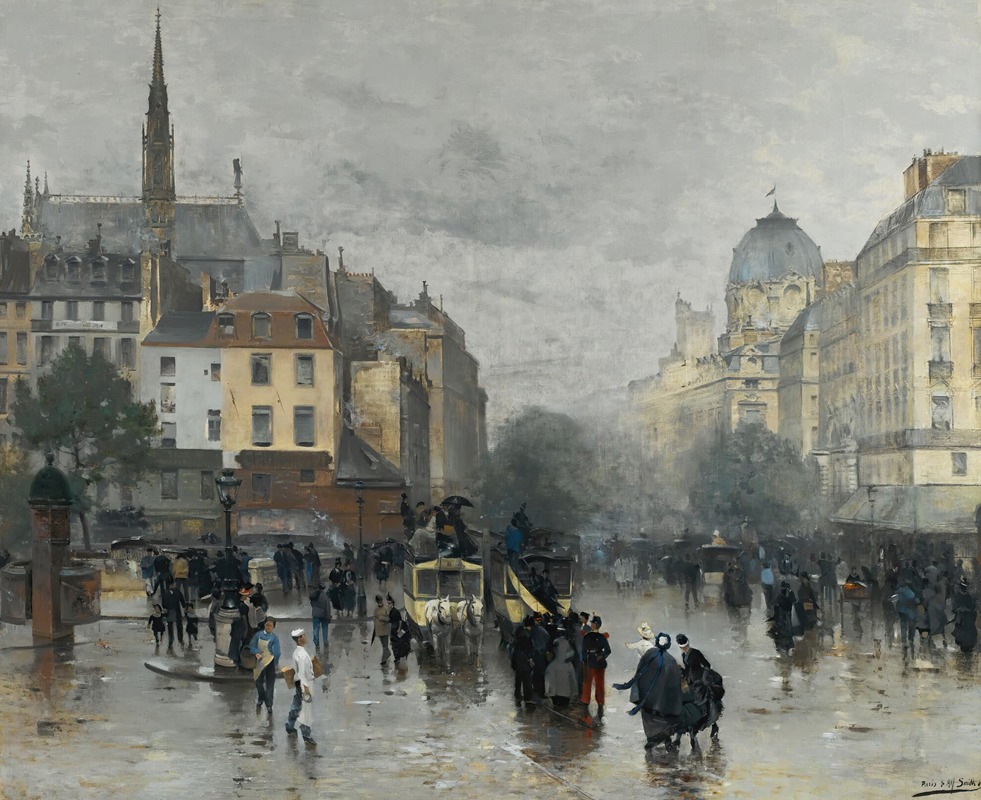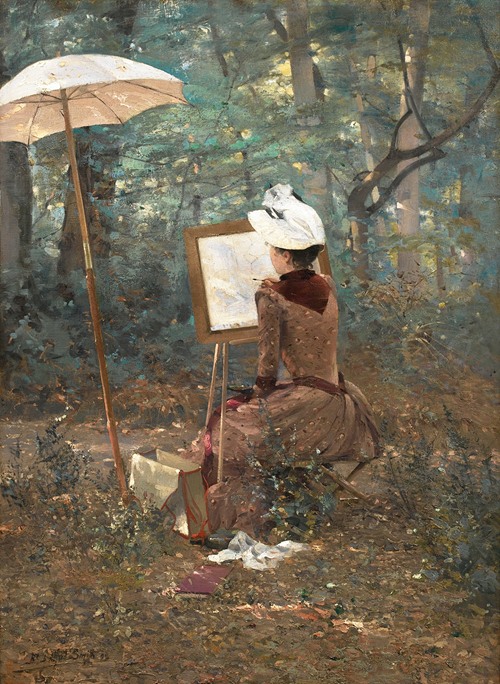

Alfred Smith was a French artist from Bordeaux who painted in the impressionist, post-impressionist and fauvist style. Some of his works resemble the early works of Claude Monet.
Smith was born in Bordeaux in 1854 to a father of Welsh origin and a mother from Bordeaux. He joined a circle of local landscape artists who followed Courbet and Corot. Smith studied with Hippolyte Pradelles (1876), Léonce Chabry (1880) and Amadeus Baudit (1884). The distinguished artist Alfred Philippe Roll noticed Smith and helped to promote his work. He exhibited in the Salon in Paris in 1880, earning an honorable mention. In 1883 his painting Le quai de Bacalan le soir was exhibited at the Salon. In the 1880s he became the new leader of the Bordeaux school, displacing Louis Auguin. However, with no need to earn a living he did not fully devote himself to painting until 1886.
In 1888 he was given a third class medal at the Salon des Artistes français, and in 1889 a bronze medal. In 1894 he was named a chevalier of the Legion of Honour. Smith won a bronze medal at the Exposition Universelle in Paris in 1900. He exhibited regularly at French salons into the 1920s, and many of his works are held in French and Italian museums. Smith was distinguished for the atmospheric evocation of the woods, gardens and cityscapes, with a subtle and nuanced palette. He painted scenes from Bordeaux, Paris and Venice before discovering the Creuse valley. As Smith's style matured he adapted a brighter palette, displayed in his landscapes of the Creuse valley. He has been called a member of the Crozant School, a broad collection of artists who painted nature around this village of the Creuse valley.
He died in Paris in 1936.

